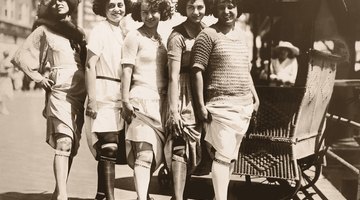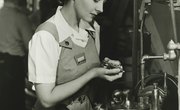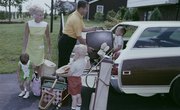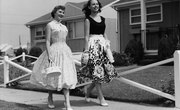The experiences and lifestyles of women in America have changed dramatically throughout history, and each era since the beginning of the 20th century has presented women with different opportunities for expression. One era in particular, which took place between the turn of the 20th century and the second World War, is defined as a period where much changed for women in the United States. Increased presence on the political scene and a strong desire for more independence defined the 1920s lifestyles of women as well as their lifestyles in the 1930s.
Getting Involved in Politics
The 1920s lifestyle grew out of the long-fought battle for women's suffrage was won with the ratification of the 19th Amendment to the Constitution. Gaining the right to vote inspired women to get involved in politics like never before. The first World Exposition of Women’s Progress welcomed nearly 160,000 people in 1925. That same year, Nellie Tayloe Ross, the first female governor to serve in the United States, was elected in Wyoming. Just seven years later, in 1932, Hattie Wyatt Caraway of Arkansas became the first female United States senator.
Women's Education in the 1920s
For women, the '20s and '30s also brought more educational and career opportunities. At the turn of the century, only 19 percent of college degrees were awarded to women. But, women's education in the 1920s increased. For instance, in 1928, that number rose to 39 percent. And the number of educated women continued to grow despite the economic hardships that came with the Great Depression. Though the Great Depression was difficult for women workers, by 1938, 800,000 women belonged to unions. That number would grow substantially as war production increased through the middle of the century.
1920s Trends of Style and Dress
Unwilling to adopt their mothers' constricting style, the 1920s trends demonstrate that women took it upon themselves to portray new styles. They replaced corsets and conservative layers with loose-fitting dresses that matched their carefree spirit. Many bobbed their hair and wore heavy makeup. In the 1930s, women adopted a more feminine style with plunging necklines, accentuated waists, knee length skirts and pumps. Advancements in clothing manufacturing increased the selections available to all classes, and from there, women were able to define themselves through individual style.
The Roaring Twenties
The social life in the 1920s for women greatly challenged traditional Victorian morality by adopting the carefree "flapper" lifestyle. Flappers engaged in drinking, smoking and free-spirited dancing. They drove fast cars and frequented bars and dance halls. They also openly mingled with men without supervision and were educated about sex. This is part of the reason the 1920s lifestyle led to the term "the Roaring Twenties."
The economic hardships of the 1930s forced women to seek more affordable social outlets. Parlor games and gambling grew popular, and local theaters flourished. As the Swing replaced the Charleston, jazz halls remained popular as well. Dance continued to offer an affordable way for women to let loose and mingle with men.
Related Articles
References
Writer Bio
Based in the Pacific Northwest and educated at the University of Washington, Rosanne Tomyn has been writing historical, cultural and political articles since 2005. Tomyn was awarded the International Labor Communicators Award for Best Profile and Best Labor History Story in 2011.











